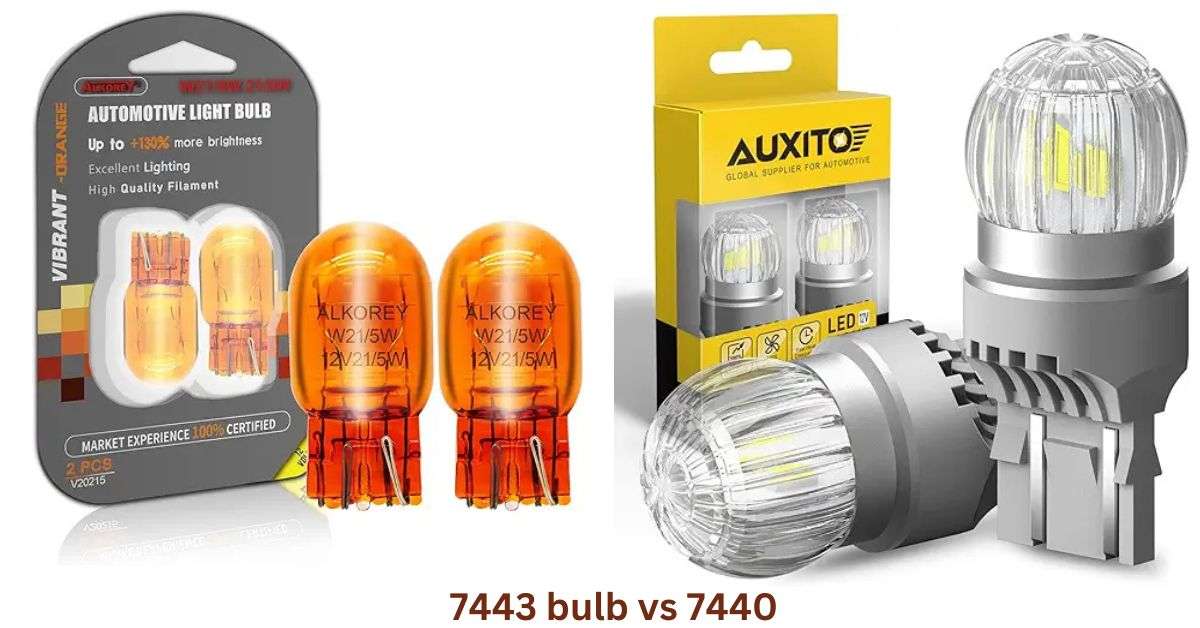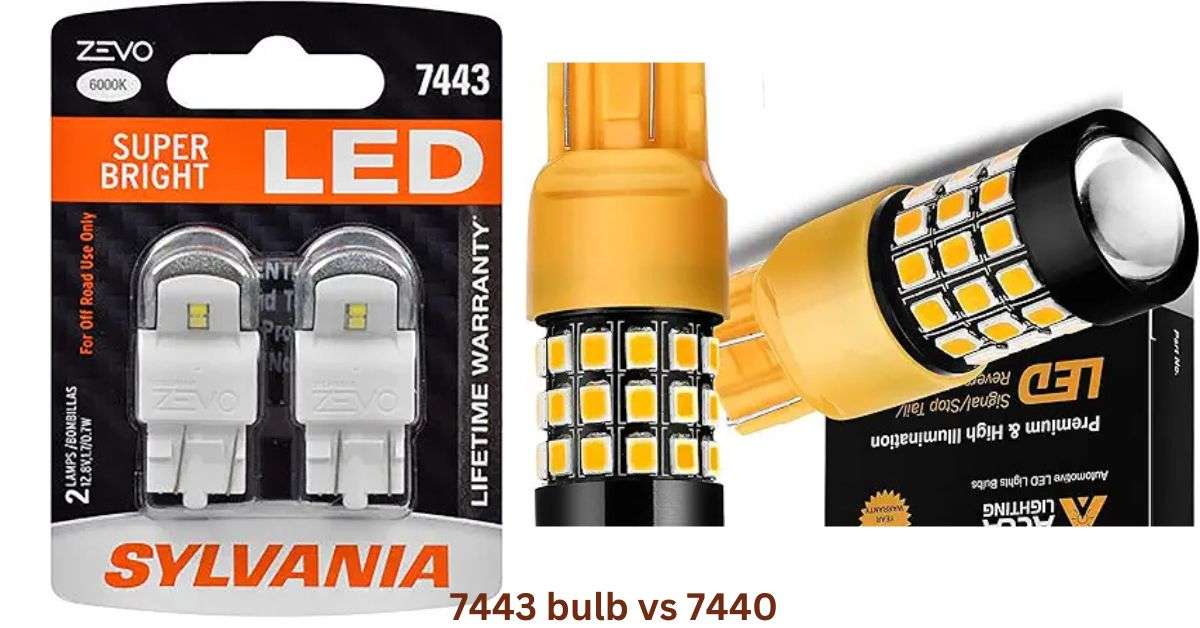Ever found yourself scratching your head in the auto parts store, wondering about the difference between 7443 bulb vs 7440? You’re not alone! These seemingly similar automotive light bulbs can be confusing, especially when it comes to picking the right one for your vehicle. In fact, over 65% of car owners struggle to distinguish between these two types, often leading to incorrect replacements and lighting issues.
While they may appear identical at first glance, 7443 and 7440 bulbs have subtle yet important differences that can affect your vehicle’s lighting performance. In this guide, we’ll break down these differences, their specific applications, and how to choose the right bulb for your car. Let’s dive in!
Understanding 7440 Bulbs
1. Origin and Basic Specifications
A single-filament bulb that is frequently used in vehicle illumination is the 7440. Designed for simplicity and efficiency, it operates with a standard voltage of 12V, making it compatible with most vehicle electrical systems. Its wattage typically falls in the range of 21W, which ensures bright and focused illumination.
2. Typical Applications in Automotive Lighting
7440 bulbs are ideal for:
- Turn signals: Offering bright, clear flashes to alert other drivers.
- Backup lights: Enhancing visibility during reverse maneuvers.
- Brake lights: Providing sharp illumination for safety on the road.
3. Compatibility with Vehicle Models
This bulb is a common choice for many car brands. To ensure compatibility, nevertheless, always refer to your car’s handbook or get advice from a specialist.
Exploring 7443 Bulbs
Key Differences from 7440 Bulbs
The 7443 bulb has a dual-filament architecture, in contrast to the 7440 bulb. This allows it to perform multiple functions, such as acting as both a tail light and a brake light, depending on the vehicle’s requirements.
Unique Technical Specifications
- Voltage: Like the 7440, it operates at 12V.
- Wattage: Typically 21W for the brighter filament and 5W for the dimmer one.
- Dual-functionality: This bulb can produce two levels of brightness.
Specific Automotive Applications
- Tail lights: Its dimmer filament provides soft, continuous lighting.
- Brake lights: The brighter filament ensures high visibility during braking.

Advantages and Potential Limitations
Advantages:
- Versatility: Suitable for dual-purpose use.
- Enhanced functionality: Reduces the need for multiple bulbs.
Limitations:
- Complexity: Requires precise wiring to function correctly.
Choosing the Right Bulb for Your Vehicle
How to Identify the Right Bulb
- Check your vehicle manual: It specifies the exact bulb type.
- Inspect the old bulb: Look for the model number printed on it.
- Speak with an expert: Seek advice from a specialist whenever possible.
Common Mistakes to Avoid
- Assuming all wedge-base bulbs are interchangeable.
- Overlooking your vehicle’s dual-function lighting requirements.
- Ignoring the voltage and wattage compatibility.
Consequences of Using the Wrong Bulb
- Reduced visibility: Improper lighting can compromise safety.
- Electrical issues: Incorrect wattage may overload the system.
- Frequent replacements: Using an incompatible bulb can cause premature burnout.
Installation and Maintenance Tips
Step-by-Step Installation Guide
- Turn off the power: Ensure your vehicle is off to prevent electrical shocks.
- Pull the old lightbulb out of the socket by gently twisting it.
- Insert the new bulb: Align the base and push it in until it clicks.
- Test the lighting: Turn on your vehicle to ensure proper functioning.

Safety Precautions
- Wear gloves to avoid skin oils damaging the bulb.
- Avoid forcing the bulb into the socket to prevent breakage.
Troubleshooting Common Issues
- Bulb doesn’t light up: Check the connection and socket for damage.
- Flickering light: Inspect for loose wiring.
- Short lifespan: Ensure proper voltage and wattage compatibility.
Extending Bulb Life
- Avoid prolonged usage in high-temperature conditions.
- Regularly clean the bulb and socket to prevent corrosion.
Conclusion: 7443 bulb vs 7440
Navigating the world of automotive bulbs doesn’t have to be complicated! By understanding the nuanced differences between 7443 and 7440 bulbs, you can make informed decisions about your vehicle’s lighting. Whether you’re a car enthusiast or a practical driver, knowing these details can save you time, money, and unnecessary frustration.
Don’t let bulb confusion dim your automotive experience. Always double-check your vehicle’s specific requirements and, when in doubt, consult a professional! Proper bulb selection is key to ensuring optimal vehicle illumination and safety on the road.
Related articles:
Hi, I’m Malik Suhail—an SEO expert, web designer, and passionate blogger with 2 years of experience. I specialize in crafting content that is not only informative but also tailored to meet the needs of my readers.
I write about diverse topics, always striving to simplify complex ideas and provide valuable insights that resonate with my audience. Whether it’s about SEO strategies, web design trends, or blogging tips, I am committed to delivering well-researched, practical, and easy-to-understand information.
My mission is to help readers navigate the digital world with confidence and clarity. I believe in adding value through authentic content that inspires action and delivers results.


